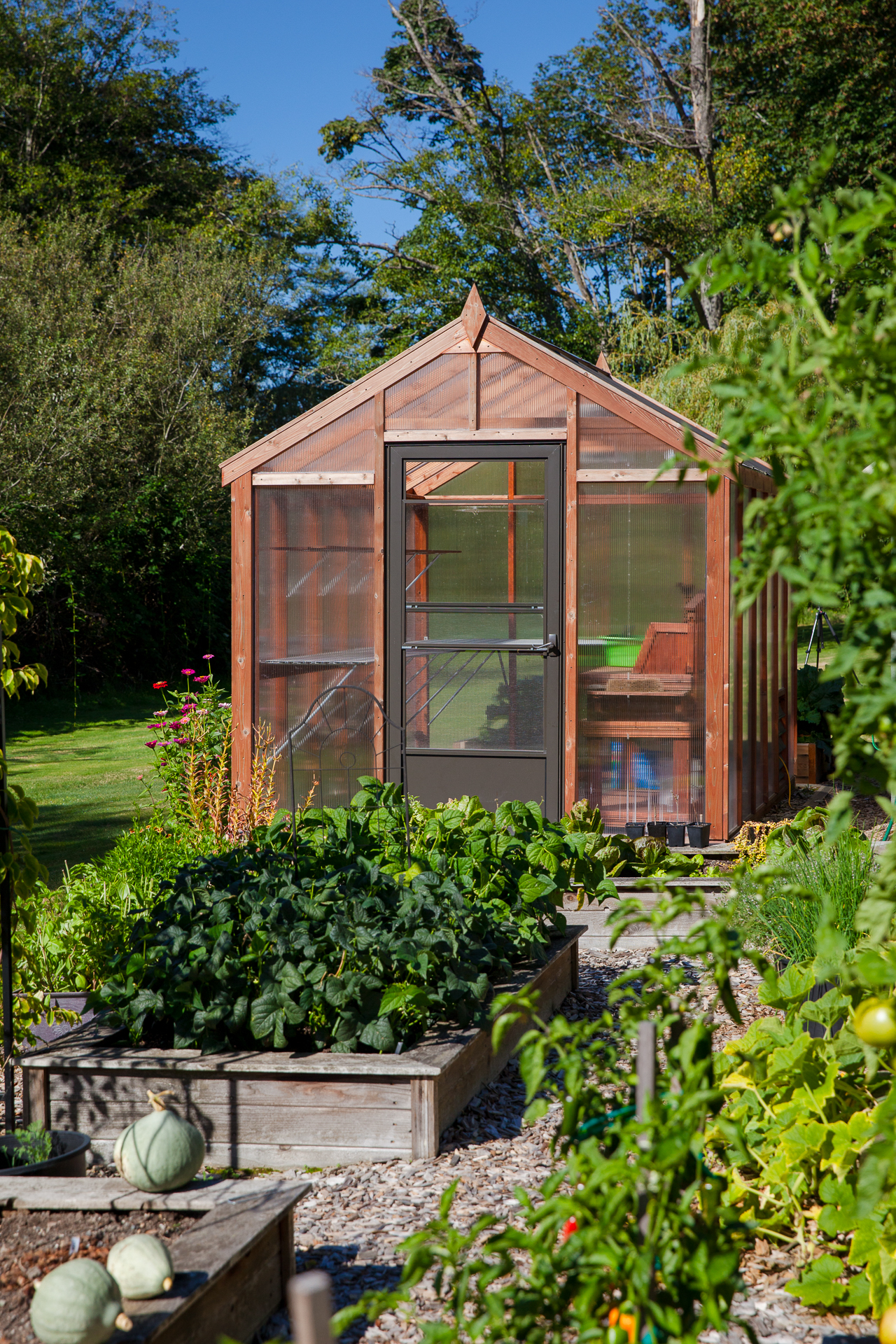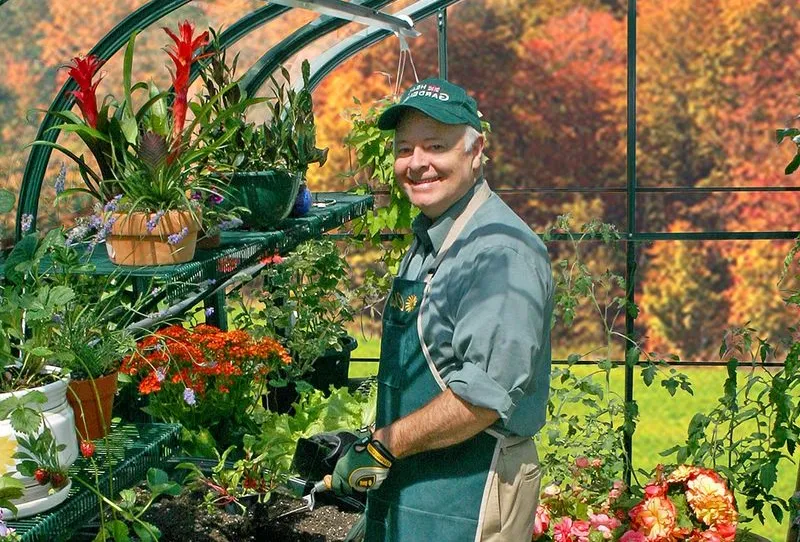Sustainable & Cost-Effective: Grow Vegetables & Herbs from Kitchen Scraps in Your Greenhouse
When you're picking up fruits and veggies from your local grocery store or farmer's market, you might not realize that many of these can easily grow right in your own garden. Instead of tossing out produce scraps, why not turn them into fresh, homegrown veggies? It's a budget-friendly and eco-friendly way to enjoy fresh food all year long. Whether you're new to gardening or have some experience, using a greenhouse makes it easier to regrow vegetables and herbs, helping you save on groceries while cutting down on waste.
In this guide, we'll show you how to regrow common produce like lettuce, celery, and garlic—right in your backyard greenhouse!
Why Grow Produce from Kitchen Cuttings?
Did you know that Americans waste about 120 billion pounds of food each year? That's nearly 40% of the food supply, and most of it ends up in landfills. If you like the idea of saving money on groceries and reducing food waste, regrowing produce is a great place to start! Instead of throwing away celery bases or garlic cloves that have started sprouting, you can give them a second life in your greenhouse. It's like getting a bonus round of veggies—without the trip to the store.
Growing your sprouting scraps in a greenhouse gives you more control over the environment. You can tweak the temperature, humidity, and light to make sure your plants have just what they need to thrive. That means fresh, pest and pesticide-free produce whenever you want it, no matter the season.


Best Produce to Regrow in Your Greenhouse
There's a whole bunch of fruits, vegetables, and herbs that you can regrow from cuttings, scraps, or seeds. Here are some of the easiest—and most rewarding—ones to get started with in your greenhouse:
Lettuce
Fresh, crisp lettuce on repeat? Absolutely! With just the leftover base, you can regrow it time and time again.
How to Regrow:
- Once you've used up the leaves, hang onto the bottom 2 inches of the head.
- Set the base in a shallow dish with the bottom half submerged in water. Find a sunny spot in your greenhouse for it to soak up the light.
- Change the water every day or two. In about a week, you should see new roots forming and leaves starting to sprout.
- Once those roots are established, plant the base in soil.
Greenhouse Tip: Lettuce likes it cool, so aim for temps between 60-70°F. Give it plenty of indirect sunlight, and you'll have fresh leaves in no time!
Celery
Celery is one of those veggies that keeps on giving. You can grow it straight from the base and enjoy fresh stalks for months.
How to Regrow:
- Cut your celery bunch down to the bottom 2 inches.
- Place 2 inch cutting it in a small bowl of water, covering just the base.
- Let sit in a well-lit part of your greenhouse.
- After about a week, new roots and shoots will start developing. That's when it's ready to move into soil.
Greenhouse Tip: Celery thrives best in a cool, moist environment. Aim for a temperature range of 55-70°F, and don't let the soil dry out and those stalks will keep on coming.
Onions
Onions are a versatile kitchen staple that you can regrow from the root ends. With a little patience, you can enjoy a steady supply of fresh bulb onions.
How to Regrow:
- Save the root ends from your onions.
- Place them in a shallow dish with just the root end submerged in water. Position the dish in a well-lit spot in your greenhouse.
- Change the water every few days. Within a week, you should see new green shoots. For full-sized onions, plant the root ends in soil once they've sprouted.
Greenhouse Tip: Onions thrive in cooler temperatures with plenty of light. Maintain a greenhouse temperature around 60-70°F for best results. Onions will take a bit longer to mature compared to green onions but are well worth the wait.
Green Onions (Scallions)
Green onions are a staple in most kitchens, and the best part is you can regrow them endlessly from the white bulbs!
How to Regrow:
- Save the white bulbs with the roots still intact.
- Place them in a glass of water, making sure the roots are just covered.
- In just a few days, you'll see new green shoots appear.
- Once those shoots reach about 4 inches tall, transplant the bulbs into soil for a continuous supply of fresh scallions.
Greenhouse Tip: Green onions are speedy growers and don't need much space, making them perfect for pots or small greenhouse beds. You'll be harvesting in no time!
Garlic
Sprouted garlic cloves? Don't toss them—plant them! You'll get garlic greens and eventually new bulbs.
How to Regrow:
- Take a sprouted garlic clove and plant it sprout-side up about 2 inches deep in soil.
- Water it regularly, and you'll soon have garlic greens.
- With a little patience, the clove will also grow into a full garlic bulb in a few months.
Greenhouse Tip: Garlic prefers cooler temperatures, making it ideal for fall or winter greenhouse planting. It's a low-maintenance crop, so you'll be rewarded with little effort. Potatoes If you've ever found a sprouted potato in your pantry, you've already got the start of your next potato plant!
How to Regrow:
- Small potatoes can be planted whole. Larger potatoes should be cut into chunks, ensuring each piece has at least one “eye” (the sprouted part).
- Let the pieces dry for a day (this will help to reduce the risk of rotting).
- Plant each small potato or chunk about 4 inches deep in your soil, with the eyes facing up.
- Water thoroughly to soon see leafy green growth.
- Within a few months, you'll have a harvest of potatoes to dig up.
Greenhouse Tip: Potatoes need plenty of room to grow, so plant them in raised beds or large containers. Mounding your soil around the plant's base as it grows will encourage more tubers to form.
Herbs (Basil, Mint, Cilantro)
Nothing beats the convenience of fresh herbs at your fingertips, and they're super easy to regrow from small cuttings.
How to Regrow:
- Snip a 4-6 inch cutting from a healthy herb plant.
- Remove the lower leaves and pop the cutting into a glass of water.
- Once roots form (in about a week), it's time to transplant the cutting into soil.
Greenhouse Tip: Herbs love warmth and sunshine, so keep your greenhouse cozy and bright. You'll have fresh herbs all year, perfect for cooking or garnishing.
Mindfully Choose Produce Varieties
There are a few things to watch out for when choosing produce varieties to re-grow from the grocery store:
Pesticide Residue from Non-Organic Produce
Some store-bought fruits and veggies, especially the non-organic ones, may have been treated with pesticides. These chemicals can stick around on the produce and might end up in your soil if you're not careful. To keep your planting boxes or greenhouse beds safe from contamination, here's what you can do:
- Rinse thoroughly: Always wash non-organic produce thoroughly before regrowing it.
- Consider starting with organic: If possible, use organic produce, which is less likely to carry pesticide residue.
- Use containers: For extra precaution, consider growing your regrown veggies in pots or separate containers, especially if you're concerned about contaminating larger garden beds.
Challenges with Hybrid or Bio-Engineered Plants
Some of the produce you find at the grocery store may come from hybrid or bio-engineered plants, which aren't always ideal for regrowing. Here's why:
- Hybrid plants are bred for specific traits (like size, color, or disease resistance). When you regrow them, the new plant may not have the same qualities as the original. You might end up with smaller or less flavorful produce, or the plant may not grow at all.
- Bio-engineered or genetically modified plants could have traits that make them harder to regrow. Some are even designed to be sterile, meaning they can't reproduce.
For the best results, we suggest sticking with organic, heirloom, or non-hybrid varieties of produce. These plants tend to regrow more reliably and offer more consistent results.
Sustainable Greenhouse Growing at Its Best
By regrowing market produce, you're doing more than saving money—you're helping the planet. You're cutting down on food waste, skipping the packaging and transportation that comes with store-bought veggies, and reducing your overall carbon footprint. Plus, greenhouse growing allows you to do all of this while keeping your plants free of harmful pesticides.
So why not give regrowing a try? Whether it's turning lettuce scraps into fresh greens or getting garlic to sprout into new bulbs, your greenhouse makes it easy to grow vegetables and herbs year-round.


